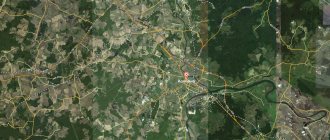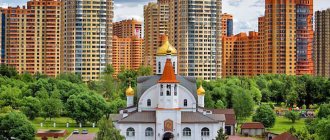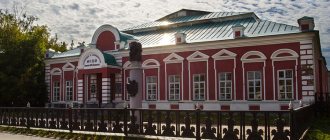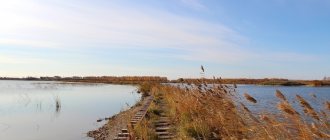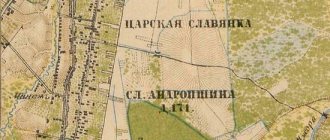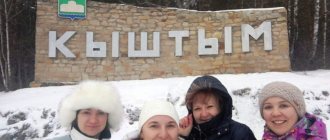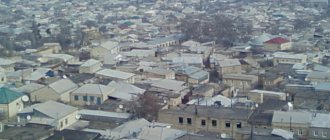City in Moscow region, Russia
For other uses, see Kolomna (disambiguation).
City in Moscow region, Russia
| Kolomna Kolomna | |
| city[1] | |
| Historical center of Kolomna | |
| Flag Coat of arms | |
| Kolomna | |
| Kolomna Kolomna Show map of Russia Kolomna Kolomna (Moscow region) Show map of the Moscow region | |
| Coordinates: 55°05′N 38°47'E / 55.083°N Latitude 38.783°E / 55.083; 38.783Coordinates: 55°05′N 38°47'E / 55.083°N Latitude 38.783°E / 55.083; 38.783 | |
| A country | Russia |
| Federal subject | Moscow region[1] |
| Based | 1177 |
| Government | |
| • Body | Council of Deputies |
| • Head | Valery Shuvalov |
| Square [2] | |
| • Total | 67.12 km2 (25.92 sq mi) |
| Height | 185 m (607 ft) |
| Population (2010 Census)[3] | |
| • Total | 144,589 |
| • Estimate (2018)[4] | 142,691 (-1.3%) |
| • Rank | 119th in 2010 |
| • Density | 2,200/km2 (5,600/sq mi) |
| Administrative status | |
| • Subordinate | Kolomna City of regional subordination[1] |
| • Capital from | Kolomna district[1], Kolomna city of regional subordination[1] |
| Municipal status | |
| • Urban district | Kolomna city district[2] |
| • Capital from | Kolomna urban district[5], Kolomna municipal district[2] |
| Timezone | UTC + 3 (MSK [6]) |
| Postal code(s)[7] | 140400 |
| Dial code(s) | +7 496 |
| OKTMO I WOULD | 46738000001 |
| Web site | www.kolomnagrad.RU |
Kolomna
(Russian: Kolomna, IPA: [kɐˈlomnə]) is an ancient city of Moscow Oblast, Russia, located at the confluence of the Moscow and Oka Rivers, 114 km (71 mi) (by rail) southeast of Moscow. Population: 144,589 (2010 Census);[3]150,129 (2002 Census);[8]161,881 (1989 Census).[9]
Story
Mentioned for the first time in 1177, Kolomna.[10] was founded between 1140 and 1160 according to recent archaeological research.[11] The name Kolomna may come from an Old Russian term for "at a bend (in the river)", especially since the old town is located at a sharp turn into the Moskva River. In 1301, Kolomna became the first city to become part of the Moscow Principality.[12]
Like some other ancient Russian cities, it has a Kremlin, which is a citadel, similarly more famous in Moscow, and is also built of red brick.[13] The stone Kolomna Kremlin was built in 1525–1531 under the Russian Tsar. Vasily III. Kolomna Citadel was part of the Great Abatis Boundary[14] and although most of the surrounding wall was removed in the eighteenth century and the materials were used for the construction of other public buildings, the remaining section of the wall, several towers and some internal buildings have been preserved and maintained in good condition . There is a museum inside. In front of the façade stands a statue of Dmitry Donskoy, commemorating the gathering of his troops in Kolomna on the eve of the Battle of Kulikovo in 1380.
The civilian arms of Kolomna were provided by Empress Catherine II, who was influenced by the sonorous name of the famous Colonna family of Rome. Hence the similar appearance of the coat of arms, despite the lack of connection between the Roman family and the city of Kolomna.
Due to the sensitive military production of missile components, Kolomna was a closed city until 1994. It is not included in the list of Golden Ring cities, despite its Kremlin and a large number of well-preserved churches and monasteries.
Transport[edit]
Kolomna is located on the Ryazan line of the Moscow Railway, 116 km from Moscow. There are five stations in Kolomna (Kolomna, Shchurovo, Bochmanovo, 6 km, Sychevo) and one station (Golutvin).
There are two bus stations in the city. Public transport in the city is represented by tram and city bus services.
Kolomna is located on three rivers and has passenger and transport piers. The most famous of these is the Bochmanovo (Russian: Бочвано) sleeping place.
Demography
| This section do not quote any sources . |
Historical population of Kolomna (in thousands)
| Year | 1897 | 1926 | 1939 | 1959 | 1962 | 1967 | 1970 | 1973 | 1976 | 1979 |
| Population | 20.9 | 35 | 85 | 118 | 125 | 131 | 136 | 140 | 145 | 146.5 |
| Year | 1982 | 1986 | 1989 | 1992 | 1996 | 1998 | 2000 | 2001 | 2003 | 2006 |
| Population | 151 | 158 | 162 | 163.7 | 153.6 | 152.1 | 150.7 | 149.6 | 150.1 | 148.0 |
Links[edit]
Notes[edit]
- ^ abcdefg Law No. 11/2013-OZ
- ^ abcd Law No. 153/2004-OZ
- ^ a b Federal State Statistics Service (2011). “All-Russian Population Census 2010. Volume 1" [All-Russian Population Census 2010, vol. 1]. All-Russian Population Census 2010 [All-Russian Population Census 2010]
. Federal State Statistics Service. - https://www.gks.ru/free_doc/doc_2018/bul_dr/mun_obr2018.rar ; archive date: July 26, 2022; received: July 25, 2022; Archive URL: https://web.archive.org/web/20180726010024/https://www.gks.ru/free_doc/doc_2018/bul_dr/mun_obr2018.rar.
- Law No. 43/2005-OZ
- "On the Calculation of Time". Official Internet portal of legal information
. June 3, 2011. Retrieved January 19, 2022. - Post office. Information and computing center of OASU RPO. ( Post office
).
Search for postal service objects ( postal Search for objects
) (in Russian) - ↑
Federal State Statistics Service of Russia (May 21, 2004).
“The population of Russia, the constituent entities of the Russian Federation as part of federal districts, urban settlements, settlements, settlements of 3 thousand or more people” [Population of Russia, its federal districts, federal districts, districts, urban settlements, rural settlements - administrative centers and rural settlements with a population of more than 3000] (XLS). All-Russian Population Census of 2002 [All-Russian Population Census of 2002]
. - “All-Union Population Census of 1989. The current population of union and autonomous republics, autonomous regions and districts, territories, negative phenomena, urban settlements and rural district centers” [All-Union Population Census of 1989: current population of union and autonomous republics, Autonomous regions and districts , territories, regions, districts, urban settlements, villages performing the functions of district administrative centers. All-Union Population Census of 1989 [All-Union Population Census of 1989]
.
Institute of Demography of the National Research University: Higher School of Economics [Institute of Demography of the National Research University: Higher School of Economics]. 1989 - via Demoscope Weekly
. - "History of Kolomna". [in English]
. - (In Russian) Mazurov A. B. Medieval Kolomna in the XIV - first third of the XVI centuries. / Ed. V. L. Yanina. M.: Alexandria, 2001. P. 58
- Nossov KS Medieval Russia Fortress AD 862-1480. Osprey Publishing. 2012. P. 8.
- Brumfield WC Sights of Russian architecture: photographic review. Rutledge. Page 94-95
- Several towers and two parts of walls
Famous people
- Filaret, Metropolitan of Moscow
- Ivan Lazhechnikov, writer
- Dmitry Dorofeev, speed skater
- Nikolai Epstein (born 1918), Soviet ice hockey coach.
- Sergei Gorshkov, Soviet admiral
- Mikhail Katukov, commander of armored forces in the Red Army
- Ekaterina Lobysheva, speed skater
- Eduard Malofeev, football player and manager
- Mikhail Tyurin, cosmonaut
- Edward Frenkel, mathematician
- Olga Graf, speed skater
- Sergey Malitsky, science fiction writer
- Vitalik Buterin, programmer, writer and creator of Ethereum
Coat of arms
The coat of arms of Kolomna is presented in the form of a French shield. In an azure field there is a silver column on a green hill. The figure is a symbol of greatness, strength, and reliable support. The firmament is thinly bordered with gold. The structure is topped with a crown flanked by two yellow six-pointed stars. Two of their rays are facing upward. Precious metal embodies wealth, justice, and generosity.
The artistic composition was adopted by decision of the City Council of Deputies dated May 22, 2002 No. 20/7 (as amended on June 18, 2003 No. 23/5).
Attractions
Kolomna Kremlin Old Golutvin Monastery
- Kolomna Kremlin including: Kolomna Cathedral
- Novo-Golutvin Monastery
- Bobrenev Monastery
Kolomna
(Moscow region)
OKATO code:
46438
Founded:
1177
City since:
1177 City of regional subordination
Center:
Kolomna district
Telephone code (reference phone)
| 4966****** | — |
| 49661***** | 23-2-92 |
Deviation from Moscow time, hours:
0
Geographic latitude:
55°05′
Geographic longitude:
38°47′
Altitude above sea level, meters:
125 Sunrise and sunset times of the Sun and Moon in the city of Kolomna
Novogolutvin Holy Trinity Monastery
On the territory of the current monastery since the 14th century. Kolomna diocese was located. It included the Bishop's House and Corps, the Trinity Church and the Theological Seminary. At the very end of the 18th century. By imperial decree the diocese was abolished. Church authorities promptly transferred the monks of the Epiphany Golutvinsky Monastery to the vacated premises in order to preserve these structures for the church. From this moment on, the Kremlin Holy Trinity Monastery began to be called Novogolutvin, and the city Epiphany - Starogolutvin.
By the middle of the 19th century. New churches and a 55-meter yellow bell tower appeared on the territory of the monastery. During Soviet times, the monastery was closed, but in 1977 its premises began to be restored. A decade later, the monastery was returned to the Russian Orthodox Church, but it became a women's monastery.
The main building of the monastery is the Church of the Holy Trinity in the Russian Baroque style. Elegant windows decorated with crimson trim stand out on the white stone walls. In the background of the photo you can see the top of a beautiful light yellow bell tower.
Novogolutvin Holy Trinity Monastery
The nuns created the mosaic floors and mahogany iconostasis with their own hands. Thanks to the efforts of restorers who removed 12 layers of paint, beautiful 19th-century painting can once again be seen on the walls and ceiling.
In 1990, in the basement of the Trinity Church, a new church was consecrated in honor of Blessed Xenia of St. Petersburg. The church is famous for its unusual ceramic iconostasis made by the nuns.
Now over 80 nuns and nuns live in the monastery, and not only from Russia. They lead a fairly active lifestyle. The monastery has an Orthodox medical center with nun doctors, as well as a dog kennel where rare Mongol-Buryat dogs and Central Asian shepherd dogs are bred and kept. The nuns embroider and work in icon painting, ceramics and carpentry workshops. The church choir travels to services in other churches in Russia, and even beyond its borders.
Address: st. Lazareva, 11A.
"Secrets of Kolomna mead"
Medovushey in Rus' was a cellar for storing honey-based supplies and ripening honey-based intoxicating drinks, in particular mead.
There was such a cellar in almost every boyar or merchant house. The “Secrets of Kolomna mead” museum is located in the restored wine cellars of a 19th century merchant house.
Museum "Secrets of Kolomna mead"
The museum is a kind of symbiosis of antiquity and modern technology. Guests who descend into the cellar are greeted by a virtual housekeeper-guide and a very real mead maker.
After a story about the honey traditions of Kolomna, visitors, under the guidance of a mead maker, prepare honey whipping and taste different types of honey. After this, in the Golden Hive store you can purchase honey products - gingerbread, syrups, balms, wines.
Address: st. October Revolution, 182A, opening hours - from 9 to 19 hours. The visit is carried out in the form of group excursions. Individual tourists can join one of the groups by pre-registering on the museum’s website (medovusha.ru) or by calling the numbers listed there. The cost of the excursion for adults is 350 rubles, and for children – 250.
Tikhvin Church
The Tikhvin Church was originally built in the 18th century. A century later, it was dismantled and a new five-domed one was built in the pseudo-Russian style. From the east it adjoined the bell tower.
Tikhvin Church
The church is named after the icon of the Mother of God, painted by the Evangelist Luke, found near the city of Tikhvin. The new church had three altars: the main one, in the name of this icon, the left one - in honor of Simeon the God-Receiver and Anna the Prophetess, and the right one, dedicated to the icon of the Mother of God “Quench my sorrows”.
During Soviet times, the church was closed, the domes were demolished, and the interior was destroyed. After the church was returned to the believers, Kolomna craftsmen carried out large-scale restoration work. Divine services in the church resumed even earlier than in the Assumption Cathedral.
Brusensky Assumption Monastery
The foundation of the monastery dates back to 1552, and is associated with the third campaign of Ivan the Terrible against Kazan. It is assumed that the king founded the monastery upon his return from a successful campaign. Initially, most of its buildings were made of wooden beams, so the monastery began to be called “timbered” or “Brusensky”. The first inhabitants of the original monastery were some participants in the victorious Kazan campaign.
Brusensky Assumption Monastery
During the Time of Troubles, the monastery experienced a decline. After the Time of Troubles, the monastery became a convent. Among the nuns there were also persons from noble families. After the abolition of the Kolomna diocese, the Brusensky Assumption Monastery was assigned to the Assumption Tula Monastery, and even the abbess and nuns were moved there. Then, at the request of the Kolomna residents, the Holy Synod reversed its decision.
The heyday of the monastery was the 19th century. During Soviet times, the monastery was closed. Its buildings suffered significant damage, and the nuns were expelled or repressed. Fortunately, large-scale restoration work has returned it to almost its original appearance.
The main building of the monastery is the five-domed Holy Cross Cathedral, erected in the mid-19th century. It became an adornment not only of the monastery, but of the entire Kremlin. White stone carved details stand out on the red brick walls of its façade.
The main relic of the Brusensky Monastery was a copy of the Kazan Icon of the Mother of God, lost in Soviet times. The list has now been recreated based on a copy found in the archives.
Address: Brusensky lane, 36.
Museum "Kolomensky Kalach"
Similar to Kolomenskaya Pastila, this establishment is a symbiosis of production, museum and cafe.
Museum "Kolomensky Kalach"
The history of the production of rolls dates back to the 16th century. The kalachniks who baked them were considered the bread elite, into whose guild ordinary bakers were not allowed. Visitors also get acquainted with versions of the origin of the most common weight-bearing rolls in former times. It was believed that the hole was used to hang it on a fixed horizontal stick in the pantry, making the rolls out of reach of mice. According to another version, this form allowed ordinary people to eat a “weight” while working without washing their hands, and then throw away the holding “handle.”
The Kalachnaya Museum is located in a restored stone mansion from the 19th century. To bake kalachi, a double-hearth Russian oven is used, heated exclusively with birch firewood. The culmination of the excursion is tasting kalachi with butter and tea.
Address: st. Zaitseva, 14, opening hours: from 10 to 18 hours. Ticket price – 350 (on weekends and during the high tourist season – 400) rubles. There is an additional fee of 250 rubles for the excursion.
